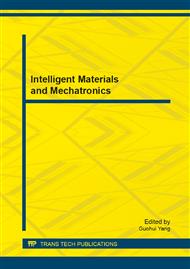p.64
p.69
p.73
p.77
p.83
p.89
p.94
p.98
p.105
Structure and Magnetic Properties Investigation of CoZr and CoZrN Thin Films
Abstract:
nanocomposite [(Co91.5Zr8.5)- or CZN films has been prepared by reactive co-sputter deposition method. Nitrogen content plays key role to tune soft magnetic properties. Experimental observation shows that, non-magnetic nitrogen content enhances magnetization and reduces coercivity. The nanostructure is composed of Co nanoclusters embedded in CoN/ZrN matrix, revealed by high resolution transmission electron microscope study. The d-spacing of single Co nanocluster was found to be ~0.22nm corresponding to (002) phase of Cobalt. X-ray diffraction result is in agreement with cubic (400) and (622) phase of CoZr. High electrical resistivity ρs~108μΩ-cm attained corresponding to 16% N2 content films. Hysteresis loop squareness depends on film thickness and coercivity squareness (S*)~0.84, obtained for ~250nm film thickness. A correlated composite nanostructure evolution is responsible for nitrogen induced magnetization and, suggests that film properties can tuned by controlling nitrogen content, in CoN/ZrN composite matrix.
Info:
Periodical:
Pages:
83-88
Citation:
Online since:
November 2013
Authors:
Keywords:
Price:
Сopyright:
© 2014 Trans Tech Publications Ltd. All Rights Reserved
Share:
Citation:


